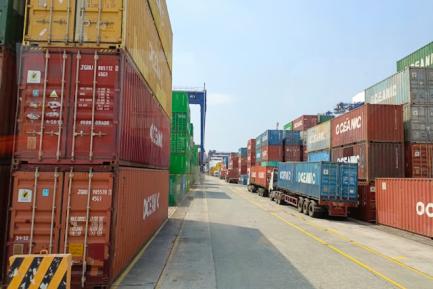
The high lending capacity continues to help reduce Spain’s foreign debt
The Spanish economy continues to reduce its foreign indebtedness – one of its main macroeconomic imbalances and a source of vulnerability in the event of potential shocks in the financial markets. This reduction is contributing to the lending capacity which the economy has been continuously generating for the past 13 years and which in 2024 reached a new all-time high (4.2% of GDP vs. 3.7% in the previous year). By economic agent, this high lending capacity was derived mainly from the non-financial private sector, including both corporations (0.9% of GDP) and, above all, households (4.7%): in the case of the former, the figure is much lower than in 2023 (2.0%) and also compared to the pre-pandemic average (3.2% in the period 2014-2019); in contrast, households showed an improvement relative to the 3.0% recorded in 2023 and to the 1.2% average of 2014-2019.1
- 1The lending capacity reflects the positive difference between savings and investment. In the case of households, the improvement in recent years is due to the significant increase in savings, plus net capital transfers, of 4.4 points of GDP relative to the 2014-2019 average. This is more than enough to fund investment, which has also grown, but by somewhat less (1.6 points). In the case of corporations, besides the weakness of investment (which has lost 1.6 points of GDP) there has also been a significant decline in savings (–3.6 points).


As a result, in 2024, the net international investment position (NIIP), which measures the balance of financial assets and liabilities vis-à-vis the rest of the world, showed a debit (negative) balance equivalent to 44.0% of GDP; this represents a significant reduction compared to the previous year (51.3%) and is the lowest figure since 2001. Despite the significant reduction in recent years (–53.2 points since the 2009 peak), it remains above the alert threshold set by the European Commission (35.0%) in the Macroeconomic Imbalance Procedure (MIP)2 (see third chart).
- 2A supervisory mechanism intended to prevent and correct potentially dangerous macroeconomic imbalances that could adversely affect economic stability in EU countries.

Excluding the Bank of Spain, in 2024 the debit balance of the NIIP resumed the downward path that had been interrupted in the previous year and fell by 109.7 billion euros, bringing it to 530.4 billion: we need to go back to 2012 to find a bigger decrease. This improvement came from both a positive net change in value due to exchange rate fluctuations (the effect of the depreciation of the euro was somewhat more intense on the assets than on the liabilities) and price fluctuations (given their higher volume, the price reduction had a greater impact on the liabilities), and above all due to net financial transactions with other countries (the positive net transactions in the assets exceeded those in the liabilities, as shown in the fourth chart).

By financial instrument, all categories improved their balance in 2024, especially other investment;3 this category went from –2.8% to 3.8% of GDP, marking its highest level since 1995, mainly thanks to foreign financial transactions (in addition to an increase in assets, there was a sharp drop in liabilities.) On the other hand, the debit balances reduced slightly, both in the case of direct investment4 (–14.6% vs. –15.6% of GDP) and for portfolio investment (–22.7% vs. –24.3% of GDP); in both cases this was thanks to positive transactions (the assets grew more than the liabilities), which more than offset the negative impact of prices.

By sector, last year only the general government sector registered a deterioration in its NIIP, which went from –38.1% to –40.2% of GDP, its worst figure since 2021. In contrast, significant improvements were recorded both in the Other Domestic Sectors category («OSR» in Spanish)5 and, most notably, in Monetary Financial Institutions excluding the Bank of Spain («OIFM»):6 in both cases, they went from a debtor balance to a creditor balance, reaching 2.5% and 4.3% of GDP, respectively (versus –1.8% and –2.8% the previous year), and marking the highest figures in the series. In the case of Other Domestic Sectors, this is also the first time this has happened: households and corporations have switched to having a net creditor position vis-à-vis the rest of the world. In other words, they have more assets than liabilities. This is the result, above all, of the savings generated by the non-financial private sector in recent years, which has been used, on the one hand, to reduce the level of debt (deleveraging) and, on the other hand, to acquire assets abroad (investment). The downside to this phenomenon is that this investment is not carried out in Spain, meaning that the positive effect it would have on economic activity, employment, innovation, productivity and business confidence is lost.





